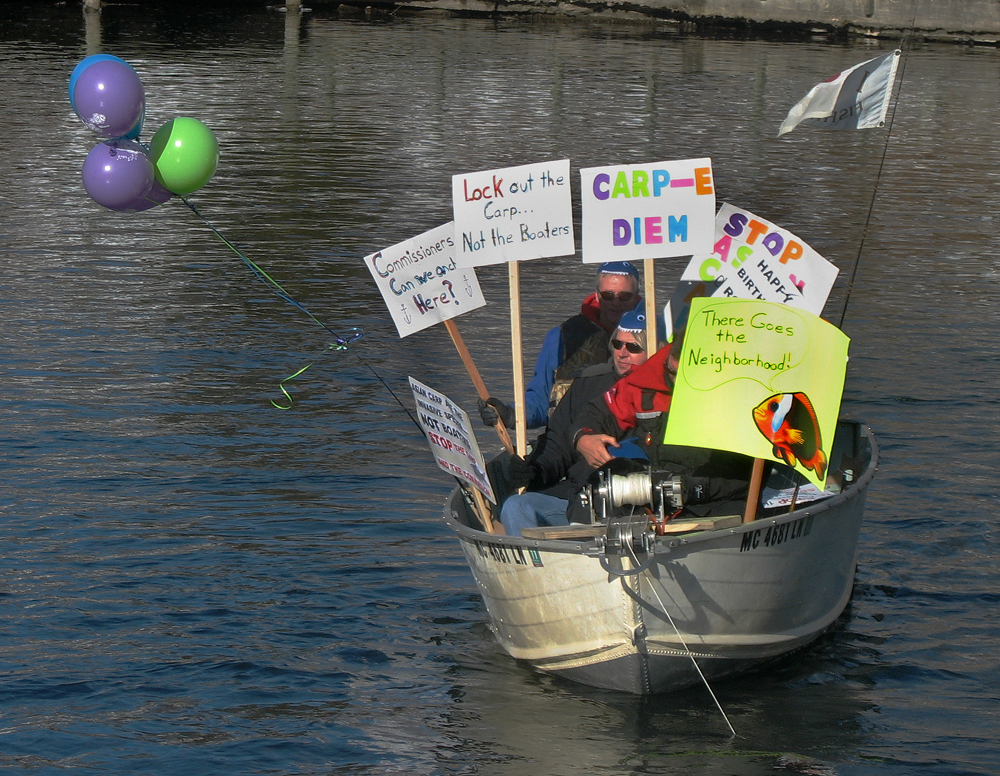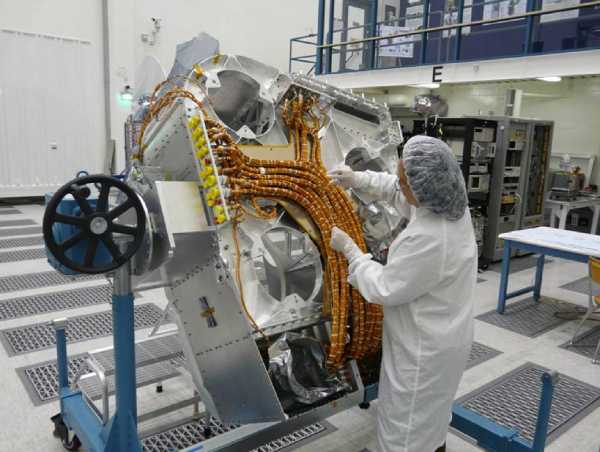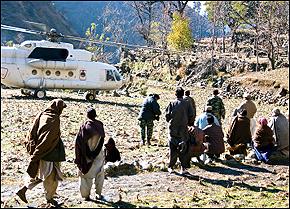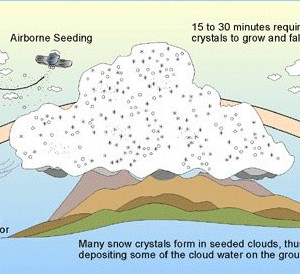Is New York’s Marcellus Shale Too Hot to Handle?
By Abrahm Lustgarten
ProPublica
As New York gears up for a massive expansion of gas drilling in the Marcellus Shale, state officials have made a potentially troubling discovery about the wastewater created by the process: It’s radioactive. And they have yet to say how they’ll deal with it.
The information comes from New York’s Department of Environmental Conservation, which analyzed 13 samples of wastewater brought thousands of feet to the surface from drilling and found that they contain levels of radium-226, a derivative of uranium, as high as 267 times the limit safe for discharge into the environment and thousands of times the limit safe for people to drink.
The findings, if backed up with more tests, have several implications: The energy industry would likely face stiffer regulations and expenses, and have more trouble finding treatment plants to accept its waste — if any would at all. Companies would need to license their waste handlers and test their workers for radioactive exposure, and possibly ship waste across the country. And the state would have to sort out how its laws for radioactive waste might apply to drilling and how the waste could impact water supplies and the environment.
What is less clear is how the wastewater may affect the health of New Yorkers, since the danger depends on how much radiation people are exposed to and how they are exposed to it. Radium is known to cause bone, liver and breast cancers, and the EPA publishes exposure guidelines for it, but there is still disagreement over exactly how dangerous low-level doses can be to workers who handle it, or to the public.
The DEC has yet to address any of these questions. But New York’s Health Department raised concerns about the amount of radioactive materials in the wastewater in a confidential letter to the DEC’s oil and gas regulators in July.
“Handling and disposal of this wastewater could be a public health concern,” DOH officials said in the letter, which was obtained by ProPublica. “The issues raised are not trivial, but are also not insurmountable.”
The letter warned that the state may have difficulty disposing of the drilling waste, that thorough testing will be needed at water treatment plants, and that workers may need to be monitored for radiation as much as they might be at nuclear facilities.
Health Department officials declined to comment on the letter. The DEC sent an e-mail response to questions about the radioactivity stating that “concentrations are generally not a problem for water discharges, or in solid waste streams” in New York state. But the agency did not directly address the radioactivity levels, which were disclosed in the appendices of the agency’s environmental review of gas drilling in the Marcellus Shale, released Sept. 30.
The review did not calculate how much radioactivity people may be exposed to, even though such calculations are routinely completed by scientists studying radiation exposure. Yet the review concluded that radiation levels were “very low” and that the wastewater “does not present a risk to workers.” DEC officials declined to explain how they reached this conclusion.
Although the review pointed to a possible need for radioactive licensing and disposal for certain materials, and it looked at other states with laws aimed at radioactive waste from drilling, the DEC said there is no precedent for examining how these radioactive materials might affect the environment when brought to the surface at the volumes and scale expected in New York. And it said that more study is needed before the DEC can lay out precise plans to deal with the waste.
In comments to ProPublica, the DEC emphasized that the environmental review proposes testing all wastewater for radioactivity before it is allowed to leave the well site, and said that the volumes of brine water, which contain most of the radioactivity detected, would be far less than the volumes of fluid from hydraulic fracturing that are removed from the well.
What scientists call naturally occurring radioactive materials — known by the acronym NORM — are common in oil and gas drilling waste, and especially in brine, the dirty water that has been soaking in the shale for centuries. Radium, a potent carcinogen, is among the most dangerous of these metals because it gives off radon gas, accumulates in plants and vegetables and takes 1,600 years to decay. Geologists say radioactivity levels can vary across the Marcellus, but the tests taken so far suggest the amount of radioactive material measured in New York is far higher than in many other places.
The state took its 13 samples — 11 of which significantly exceeded legal limits — between October 2008 and April 2009. The DEC did not respond to questions about whether additional sampling has begun or whether the state would begin issuing drilling permits before the radioactivity issues are resolved. The DEC told ProPublica it did not know where the wastewater would be treated.
“It’s got to go somewhere,” said Theodore Adams, a radiation remediation and water treatment consultant with 30 years of experience with radioactive waste. “It’s not going to just go away.”
A Vague Threat
Determining the health threat that radioactive material poses to workers and to the public is complicated. Measuring human exposure — which is quantified in doses of millirems per year — from radiation is notoriously difficult, in part because it depends on variables like whether objects interfere with radiation, or how sustained exposure is over long periods of time.
Gas industry workers, for example, would almost certainly face an increased risk of cancer if they worked in a confined space where radon gas, a leading cause of lung cancer and a derivative of radium, can collect to dangerous levels. They would also be at risk if they somehow swallowed or breathed fumes from the radioactive wastewater, or handled the concentrated materials regularly for 20 years. But without these types of intensive or confined exposures, the materials may be less dangerous, making it difficult to discern effects on workers’ health, experts say.
People absorb radioactivity in their daily routines, complicating health assessments. Eighty percent of human radioactivity exposure comes from natural sources, according to the EPA. Everything from granite countertops to a pile of playground dirt can emit radioactivity that is higher than the EPA, which regulates based on a theory that zero exposure is best, may prefer.
“You start with the world where you and I are getting an exposure from the sun, from the soil we walk on, from the brick in our house that on average is about 400 millirems a year — which is dangerous,” said Tom Lenhart, a former member of the federal-state Interagency Steering Committee on Radiation Standards. “The EPA would never allow that kind of exposure. So you are starting from a baseline of dangerous exposure, and this is what makes regulating it a nightmare.”
The EPA estimates that Americans are exposed to about 300 to 360 millirems per year, including routine artificial exposures like getting an X-ray or flying in an airplane. Each multiple of this “background level” denotes a proportional increase in the chance of getting cancer.
The natural radioactivity of the Marcellus Shale has caused concern since the mid-1980s, when high levels of radon gas were found in the basements of homes in Marcellus, a town in upstate New York, where the shale reaches the surface. The question has long been, if the Marcellus can cause radioactive gas to seep into people’s basements, how much radioactivity might be infused into the water left over from drilling? Add to that the question of how much human exposure can be expected from the radiation detected at some Marcellus drilling sites.
In its environmental review, the state said it couldn’t answer those questions because exposure depends on so many variables and because the units of measurement for human exposure and concentrations in water are incompatible. There is “no simple or universally accepted equivalence between these units,” the DEC wrote in its environmental review.
But Rick Kessy, operations manager for Fortuna Energy, a subsidiary of Canadian Talisman Energy and the largest gas producer in New York, says his company has assessed worker exposure at two of the company’s well sites in Pennsylvania, where it found no serious risk.
And a U.S. Department of Energy expert who specializes in such exposure conversions said an analysis in New York should be “very easy to do.”
“If they know the concentrations and they know the exposure pathways it should be straightforward to calculate that,” said Charley Yu, who runs the national computer dose modeling program at Argonne National Labs for the U.S. Department of Energy.
In fact, New York’s DEC used Yu’s government modeling program, called RESRAD, in a 1999 study to establish radioactivity exposure risks for oilfield brine spread on roads, a common disposal practice. Its brine samples in that case contained far less radium than the Marcellus water. It laid out a simple scenario, assuming a person walked on the road for two hours a day over 20 years and a fixed quantity of brine was spread there. That study found no threat to human health.
No such analysis was included in the state’s recent supplemental environmental impact statement.
Few Disposal Options
All this would be of substantially less concern if New York were like most of the other states that produce some radioactive waste during natural gas drilling. In those states, the waste is re-injected underground. But in New York, injection disposal wells are uncommon, and those that do exist aren’t licensed to receive radioactive waste or Marcellus Shale wastewater, according to the EPA. Instead, most drilling wastewater is treated by municipal or industrial water treatment plants and discharged back into public waterways.
The radium-laden wastewater would almost certainly need to be carefully treated by plants capable of filtering out the radioactive substances. Kessy, the Fortuna manager, which operates five of the wells with spiked readings in New York, said the levels are higher than he has seen elsewhere. Treatment plants in Pennsylvania are accepting Fortuna wastewater with much lower levels of radioactivity from the company’s wells there, Kessy said, but if plants can’t take the higher concentrations, it could be crippling.
“In the event that they were not able to comply due to high radioactivity, they would reject the water,” Kessy said. “And if we did not have a viable option for it, our operations would just shut down. There is no other option.”
It is not clear which treatment plants, if any in New York, are capable of handling such material.
DEC spokesman Yancey Roy said that “there are currently no facilities specifically designated for treating them.” He added that the state depends on the drilling companies to make sure there is a legal treatment option for the water, and then reviews those plans.
“The department has not received any permit submissions from the well operators that include details about treatment options for the brine containing NORM,” he said. “So we do not know what treatment options are being considered or how effective NORM removal will be.”
ProPublica contacted several plant managers in central New York who said they could not take the waste or were not familiar with state regulations.
“We are not set up to take radioactive substances,” said Patricia Pastella, commissioner of the Onondaga County Department of Water Environment Protection, which operates the Metropolitan plant in Syracuse, N.Y. “It does present a problem with disposal.”
Filtering the water is just one of several problems. Plants that can filter out the radioactive materials are left with a concentrated sludge that has substantially higher radioactivity than the wastewater. Sludge can also collect inside the pipes at well sites, in waste pits and in holding tanks.
Federal laws don’t directly address naturally occurring radioactivity, and the oil and gas industry is exempt from federal laws dictating handling of toxic waste, leaving the burden on New York state. New York has laws governing radioactive materials, but the state’s drilling plans don’t specify when they would apply.
Experts who reviewed the concentrations of radioactive metals found in New York’s wastewater said the leftover sludge is likely to exceed the legal limits for hazardous waste and would need to be shipped to Idaho or Washington, to some of the only landfills in the country permitted to accept it.
Fortuna’s Kessy said that’s an acceptable cost of doing business. “We’ll be willing, of course, to fund the necessary disposal means,” he said.
The same may be required of some of the equipment used in drilling, which can eventually emit much higher levels of radiation than the water itself. Louisiana, for example, began regulating radioactive materials after it found radioactive build-up in pipes dumped in scrap yards and in the steel used to build schoolyard bleachers.
But the levels in that state were just one-eighth of those measured so far in New York.
“I don’t believe anyone has taken a look, seriously, at what the unintended consequences are to dealing with these kinds of materials,” said Theodore Adams, the radioactive waste disposal consultant. “It’s a unique animal — a unique disposal — and depending on where it is located and who is receiving it, it could have an impact.”
ProPublica’s Sabrina Shankman contributed reporting to this article.
This report comes to Circle of Blue from ProPublica, an independent, non-profit newsroom based in Manhattan that produces investigative journalism in the public interest.

Circle of Blue provides relevant, reliable, and actionable on-the-ground information about the world’s resource crises.










Leave a Reply
Want to join the discussion?Feel free to contribute!